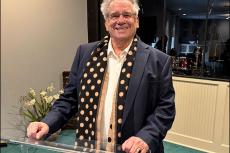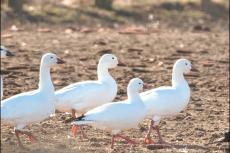"Kelp, kelp, and more kelp" is how John Dunne, the director of the East Hampton Town Shellfish Hatchery, described a request to the town trustees to allow a pilot project that would see 100-foot lines of kelp grown in both Three Mile and Accabonac Harbors this winter.
At their meeting on Monday, Mr. Dunne, who previously sought and received a letter of support from the trustees to pursue a grant from the town's water quality technical advisory committee, which issues funding recommendations to the town board, said that he hopes to grow sugar kelp in one or two areas in Three Mile Harbor. The purpose is to extract nitrogen, carbon, and phosphorus in order to improve the quality of the impaired water body.
Mr. Dunne told the trustees that the Accabonac Protection Committee has voted to allot money to the hatchery to add on to the project, so that three 100-foot lines of kelp would be grown at two locations in Accabonac Harbor.
Seaweed farming is the fastest growing aquaculture sector, according to the National Oceanic and Atmospheric Administration. Seaweeds use the entire water column, allowing farmers to grow the crop on longlines suspended below the surface water.
Kelp, one of the fastest growing plants in the world, takes in five times more carbon than most plants on land and sequesters more carbon than eelgrass, mangroves, and salt marshes combined based on biomass, countering the acidification of the oceans resulting from their absorption of carbon dioxide from greenhouse gas emissions. It also serves as habitat for juvenile shellfish. The species has multiple uses: as food for human consumption, as animal feed, as fertilizer, and as biofuel.
Kelp cultivation would not conflict with the hatchery's work to grow and seed waterways with shellfish, as seed strings would be grown at the hatchery in the autumn, Mr. Dunne said, after its primary work has concluded for the year. They would be deployed to longlines in November and harvested in May or June, depending on the weather.
He previously spoke of a plan to site lines at the head of Three Mile Harbor, approximately 20 feet apart. In Accabonac Harbor, lines would be deployed off Shipyard Lane, near an existing oyster garden at 286 Gerard Drive, and in deeper water offshore. They would be monitored biweekly, with growth and nitrogen and phosphorus concentration monitored by Stony Brook University. Data would be conveyed to the public via the hatchery's annual report, Mr. Dunne said.
The trustees, who have jurisdiction over many of the town's waterways and bottomlands, agreed to grant a one-year permit for the pilot program.



